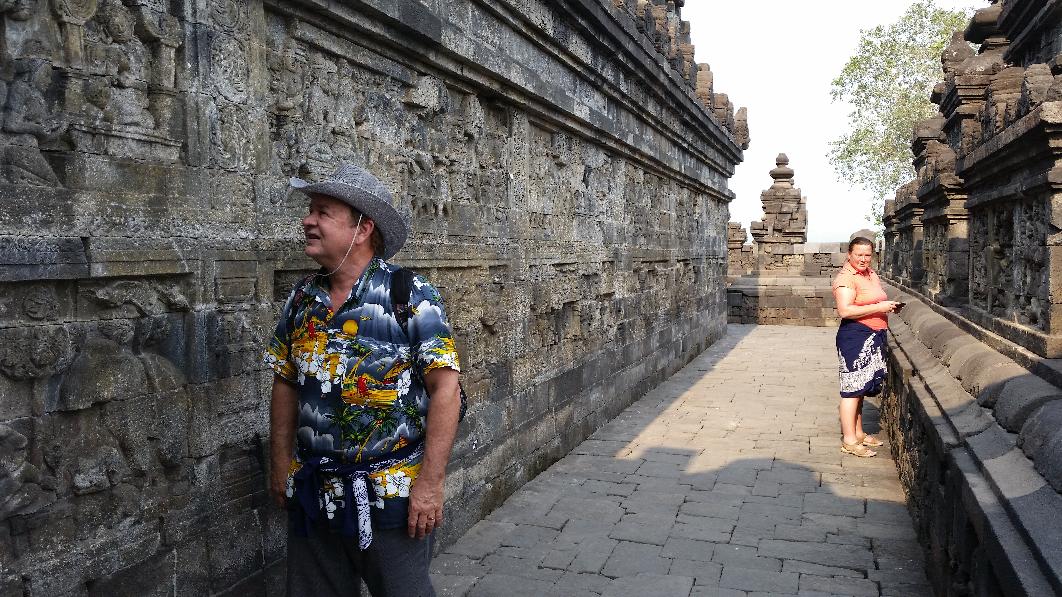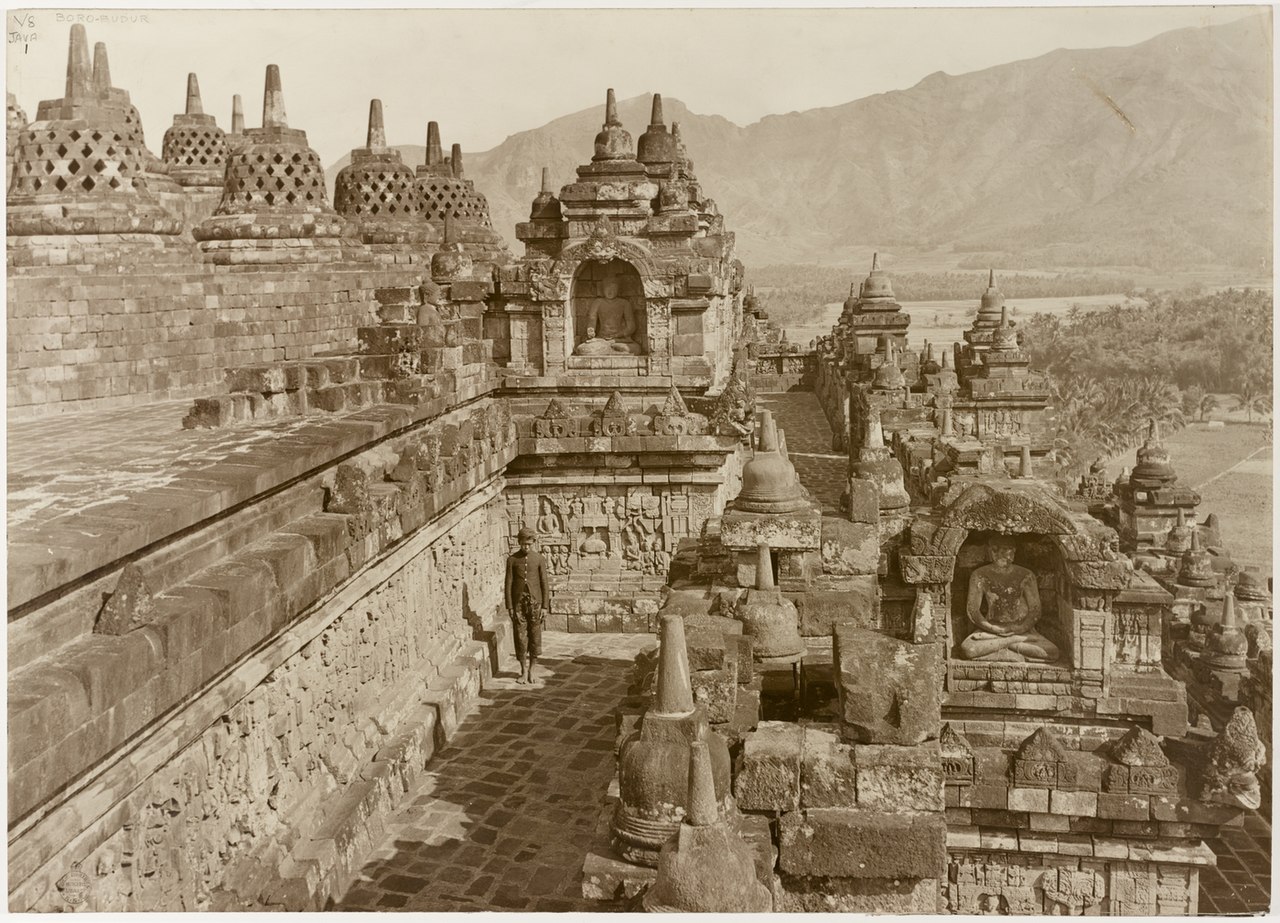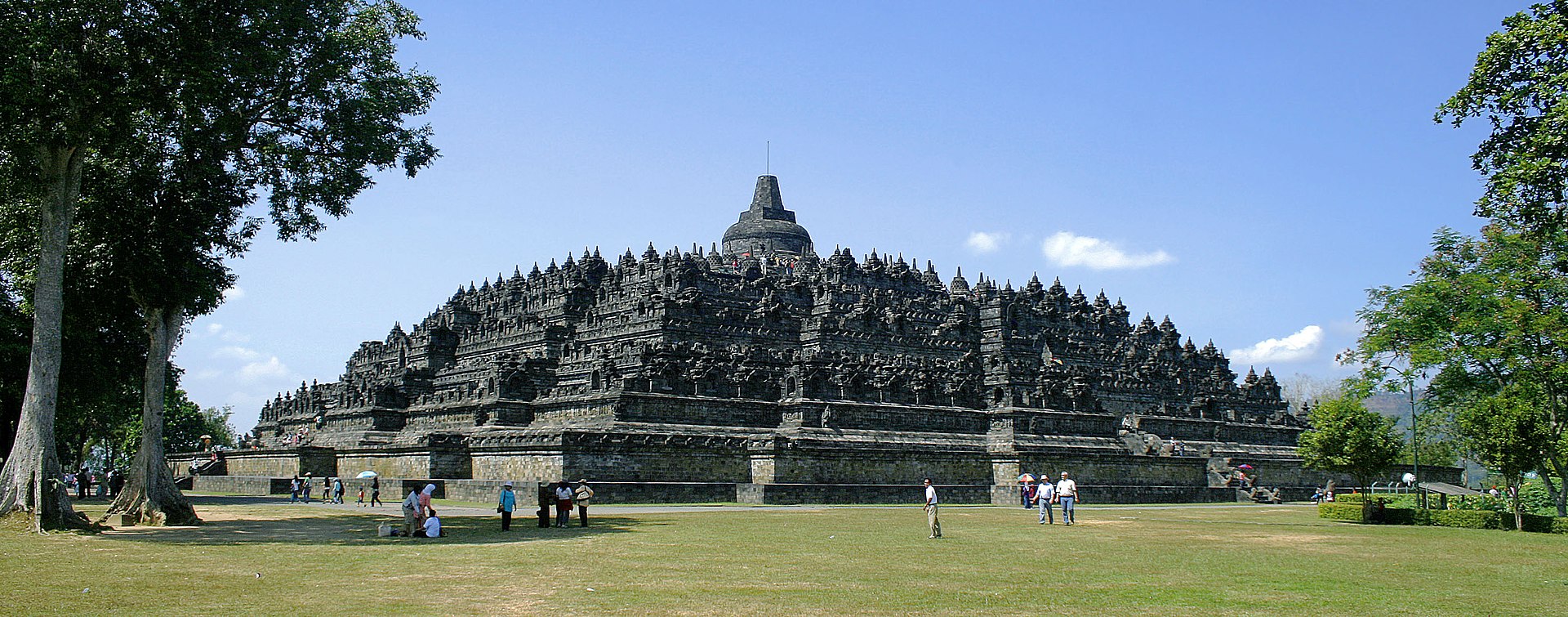
AsianOverland.net
Tour Guide - Itinerary
Asian Overland Sydney to London
Started 22/06/2022 Finished 21/06/2023365 Days ITINERARY
Day 354 date 10/06/2023JAKARTA to BOROBUDUR, JAVA, INDONESIA
ASIANOVERLAND.NET SYDNEY TO LONDON DAY 354/39: BOROBUDUR, JAVA, INDONESIA
Borobudur in Central Java is the world's largest Buddhist temple, consisting of nine stacked platforms topped by a central dome. It is decorated with 504 Buddha statues and 2,672 relief panels (1,460 narrative and 1,212 decorative), which cover the façades and balustrades. The central dome is surrounded by 72 Buddha statues, each seated inside a perforated stupa.
Construction of Borobudur was between 750 and 825 AD, during the peak of the Sumatran Sailendra dynasty rule in central Java, when their power extended from Sumatra to southern Thailand, the southern kingdoms of Philippines, and North Malaya (Kedah, the ancient Hindu state of Kadaram).
The Sailendras were followers of Buddhism, but many Hindu and Buddhist monuments were built on the plains and mountains of Central Java during their rule. Buddhist monuments, including Borobudur, were erected around the same period as the Hindu Shiva Prambanan temple.
Construction of Buddhist temples, including Borobudur, was possible because permission was granted by Hindu Kings to Buddhist followers to build such temples. During this period there was little conflict concerning religions in Java, as Hindu Kings patronized the establishment of Buddhist monuments and vice versa.
The temple design follows Javanese Buddhist architecture blending the Indonesian indigenous tradition of ancestor worship and the Buddhist concept of attaining nirvāṇa. The temple demonstrates the influences of Gupta art that reflects India's influence in the region, but the indigenous scenes and elements make Borobudur uniquely Indonesian.
The monument is a shrine to the Buddha and a place for Buddhist pilgrimage. The pilgrim/tourist journey begins at the base of the monument and follows a path around the monument, ascending to the top. The monument guides visitors through an extensive system of stairways and corridors with 1,460 narrative relief panels on the walls and the balustrades.
The narrative panels are grouped into 11 series that encircle the monument for a total length of 3,000 metres. The hidden foot contains the first series with 160 narrative panels, and the remaining 10 series are distributed throughout walls and balustrades in four galleries starting from the eastern entrance stairway to the left. Narrative panels on the wall read from right to left, while those on the balustrade read from left to right. This conforms with the ritual performed by pilgrims who move in a clockwise direction while keeping the sanctuary to their right.
The hidden base depicts the workings of karma. The upper part depicts the biography of Lord Buddha, while the lower part of the wall and also the balustrades in the first and second galleries tell the story of the Buddha's former lives. The remaining panels are devoted to Sudhana's wandering and attainment of the Perfect Wisdom.
The 160 hidden panels do not form a continuous story, but each provides a complete illustration of cause and effect. There are depictions of activities from gossip to murder, with corresponding punishments. There are also worthy activities including charity and pilgrimage to sanctuaries, and their rewards. The pains of hell and the pleasure of heaven are also depicted. There are scenes of daily life, complete with the cycle of birth and death.
Sometime between 928 and 1006, King Mpu Sindok moved the capital of the Medang Kingdom to the region of East Java after a series of volcanic eruptions, which started the decline of Borobudur.
Borobudur was abandoned following the 14th-century Javanese conversion to Islam and decline of Hindu kingdoms in Java. Borobudur lay hidden for centuries under layers of volcanic ash and jungle growth until its restoration between 1975 and 1982.
© This work is copyright. Apart from any use permitted under the Copyright Act 1968, no part may be reproduced by any process, nor may any other exclusive right be exercised, without the permission of Peter Searle, peter@portseavillageresort.com; 1980-2024.
Website built by Justin O’Dea www.webdeveloperdocklands.com.au


















